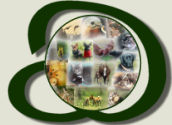4-STAGE LIFE CYCLE
Female mosquito obtains a blood meal and lays her eggs directly on the surface of stagnant water, in a depression or on the edge of a container where rainwater may collect and flood the eggs.
Eggs hatch and a mosquito larva or "wriggler" emerges. The "wrigglers" live in the water, feeds and develops into the third stage called a pupa or "tumbler".
The pupa lives in the water, but no longer feeds.
The final stage sees the pupa emerge from the pupal case and the water as a fully developed adult, ready to bite.
BREEDING GROUND
The type of standing water in which the female lays her eggs depends in part upon the species.
Beneficial predators such as fish and dragonfly nymphs in ponds, lakes and streams keep these bodies of water relatively free of mosquito larvae.
Marshes, swamps, clogged ditches and temporary pools and puddles are optimal breeding sites.
Some of the most annoying and potentially dangerous mosquito species, such as the Asian tiger mosquito prefer to lay their eggs in tree holes and containers such as old tires, buckets, toys, potted plant trays and plastic covers and tarps.
PROTECTION
Reduce the number of mosquito breeding sites. Empty standing water in old tires, buckets, plastic covers, toys or any other container where "wrigglers" and "tumblers" live.
Change water in bird baths, fountains, wading pools, rain barrels and potted plant trays at least once a week...more often is better.
Drain or fill holes and temporary pools with dirt.
Keep rain gutters unclogged.
Wear long sleeves and long pants if you are out where the mosquito population is high.
Make sure windows and door screens are "bug tight".
Apply insect repellant sparingly to exposed skin.
REPELLENTS
DEET is the industry standard for preventing mosquito bites. The more DEET a repellant contains the longer time it can protect you from mosquito bites. A higher percentage of DEET does not mean better protection...it just lasts longer. Choose a repellent that provides protection for the duration of time you plan to be outdoors. 30% or less is the recommended amount.
Don't forget to spray your clothing as well. Mosquitoes can bite through thin fabric. You can also soak your clothes in permethrin if you will be out in heavily infested areas. One treatment will last for several washings. Do not apply permethrin directly to skin.
Anytime you use insecticides or insect repellant be sure to read and follow the manufacturer's directions.
THIS AND THAT
Mosquito adults feed on flower nectar, juices and decaying matter for flight energy.
Larvae feed off organic particulates.
Mosquitoes do not feed on blood. The female mosquito requires a blood meal for development of her eggs.
Male mosquitoes do not bite...only the female does.
Mosquitoes tend to be most active at dawn and dusk.
ZAPPERS & BATS
Bug zappers can be effective if you don't mind the constant "frying" sound. They also cook more beneficial insects than harmful ones.
Bats supposedly gobble up hundreds of mosquitoes an hour. Put up some bat houses and watch the show! Just a note though, bats aren't stupid and are not going to go looking for mosquitos if there is a food source more readily available. They will eat their fair share, but are certainly not going to eliminate the mosquito population.
MOSQUITOES
MORE INFO:

STOP
MOSQUITOES!
Remove sources of standing water such as old tires, plant saucers, tarps, buckets, etc.
Change water frequently in bird baths, wading pools, water troughs.
Use Mosquito Dunks in water gardens, ponds
Fill stagnant pools of water and puddles with dirt.
Mosquitoes feed primarily at dawn and dusk. Wear long-sleeved tops and long pants if you are out.
Keep horses and mules inside if possible at prime mosquito feeding times.
Check screens and doors to be sure they are bug tight.
Put screens on stable windows and use a barrier treatment such as Mosquito Beater around your barn or stable.
Cover infant carriers with mosquito netting.
Use yellow light bulbs for outside lighting.
Web Site Design by S&J Enterprises - Homestead Website Design

